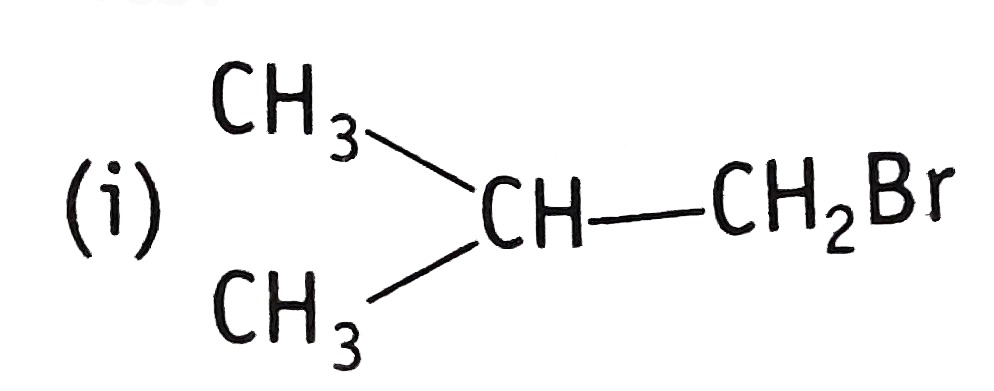Arrange reactivity of given compounds in decreasing order for electrophilic addition reaction
1.C6H5−CH=CH2 2.C6H5−C | CH3=CH−CH33.C6H5−C | C6H5=CH−CH3 4.CH2=CH−NO2
Select the correct answer from codes given below
4, 1, 2, 3
3, 2, 1, 4
2, 3, 1, 4
2, 3, 4, 1
The correct Answer is:B
To arrange the given compounds in decreasing order of their reactivity for electrophilic addition reactions, we need to analyze the stability of the carbocation intermediates formed during these reactions. The stability of carbocations is influenced by the number of alkyl groups attached to the positively charged carbon and the presence of resonance effects.
1. Identify the Compounds:
- Compound 1: C6H5−CH=CH2
- Compound 2: C6H5−CH(CH3)−CH=CH3
- Compound 3: C6H5−C(C6H5)=CH−CH3
- Compound 4: CH2=CH−NO2
2. Electrophilic Addition Mechanism:
- In electrophilic addition reactions, an electrophile (like H⁺ from HCl) adds to the double bond, forming a carbocation intermediate. The stability of this carbocation determines the reactivity of the compound.
3. Analyze Each Compound:
- Compound 1: When H⁺ adds, it forms a secondary carbocation C6H5−CH+−CH3. This carbocation is stabilized by resonance with the phenyl ring.
- Compound 2: The addition of H⁺ leads to the formation of a tertiary carbocation C6H5−CH+(CH3)−CH2−CH3. Tertiary carbocations are more stable due to hyperconjugation and resonance.
- Compound 3: This compound also forms a tertiary carbocation C6H5−C+(C6H5)−CH2−CH3. The presence of two phenyl groups provides significant resonance stabilization.
- Compound 4: The addition of H⁺ results in a primary carbocation CH+2−CH−NO2. The nitro group (NO₂) is an electron-withdrawing group, which destabilizes the carbocation.
4. Rank the Carbocation Stability:
- Most Stable: Compound 3 (tertiary with strong resonance)
- Second Stable: Compound 2 (tertiary with resonance)
- Third Stable: Compound 1 (secondary with resonance)
- Least Stable: Compound 4 (primary with destabilizing group)
5. Order of Reactivity:
- Since reactivity in electrophilic addition reactions follows the stability of the carbocation:
- Reactivity Order: Compound 3 > Compound 2 > Compound 1 > Compound 4
6. Final Arrangement:
- Thus, the decreasing order of reactivity for electrophilic addition reactions is:
- 3 > 2 > 1 > 4
- Compound 1: C6H5−CH=CH2
- Compound 2: C6H5−CH(CH3)−CH=CH3
- Compound 3: C6H5−C(C6H5)=CH−CH3
- Compound 4: CH2=CH−NO2
- In electrophilic addition reactions, an electrophile (like H⁺ from HCl) adds to the double bond, forming a carbocation intermediate. The stability of this carbocation determines the reactivity of the compound.
- Compound 1: When H⁺ adds, it forms a secondary carbocation C6H5−CH+−CH3. This carbocation is stabilized by resonance with the phenyl ring.
- Compound 2: The addition of H⁺ leads to the formation of a tertiary carbocation C6H5−CH+(CH3)−CH2−CH3. Tertiary carbocations are more stable due to hyperconjugation and resonance.
- Compound 3: This compound also forms a tertiary carbocation C6H5−C+(C6H5)−CH2−CH3. The presence of two phenyl groups provides significant resonance stabilization.
- Compound 4: The addition of H⁺ results in a primary carbocation CH+2−CH−NO2. The nitro group (NO₂) is an electron-withdrawing group, which destabilizes the carbocation.
- Most Stable: Compound 3 (tertiary with strong resonance)
- Second Stable: Compound 2 (tertiary with resonance)
- Third Stable: Compound 1 (secondary with resonance)
- Least Stable: Compound 4 (primary with destabilizing group)
- Since reactivity in electrophilic addition reactions follows the stability of the carbocation:
- Reactivity Order: Compound 3 > Compound 2 > Compound 1 > Compound 4
- Thus, the decreasing order of reactivity for electrophilic addition reactions is:
- 3 > 2 > 1 > 4
Similar Questions
Knowledge Check
Correct name for the given compound
CH3−CH2−C∣CH2CH3H−CH2−C∣CH3H−CH2−CH3 isA3-ethyl-5-methylheptaneB5-ethyl-3-methylheptaneC1,1-diethyl-3-methylpentaneD3-methyl-5,5-diethylpentane
CH3−CH2−CH2−C∣OHH−CH3 and CH3−CH2−C∣OHH−CH2−CH2−CH3 are
View SolutionGive the IUPAC name
CH3−CH∣C2H5−CH2=CH∣C2H5−CH3
View SolutionCorrect IUPAC name for H3C−CH∣C2H5−CH∣C2H5−CH3 is......
View SolutionThe IUPAC name of
CH3−C∣Cl=C∣CH3−C∣C2H5H−CH2−C≡CH
View SolutionWrite IUPAC names of the following compounds.
(i) CH3−CH2−C∣CH3=CH−CH3 (ii) CH3−CH2−CH2−CH∣C2H5−CH2−COOH
View SolutionH3C−CH∣CH3−CH=CH2+HBr→A.
A is predominantly
View SolutionArrange the following compounds in increasing order of their boiling points.
 , (ii) CH3CH2CH2CH2Br
, (ii) CH3CH2CH2CH2Br
(iii) H3C−CH3C∣∣Br−CH3
View Solution
